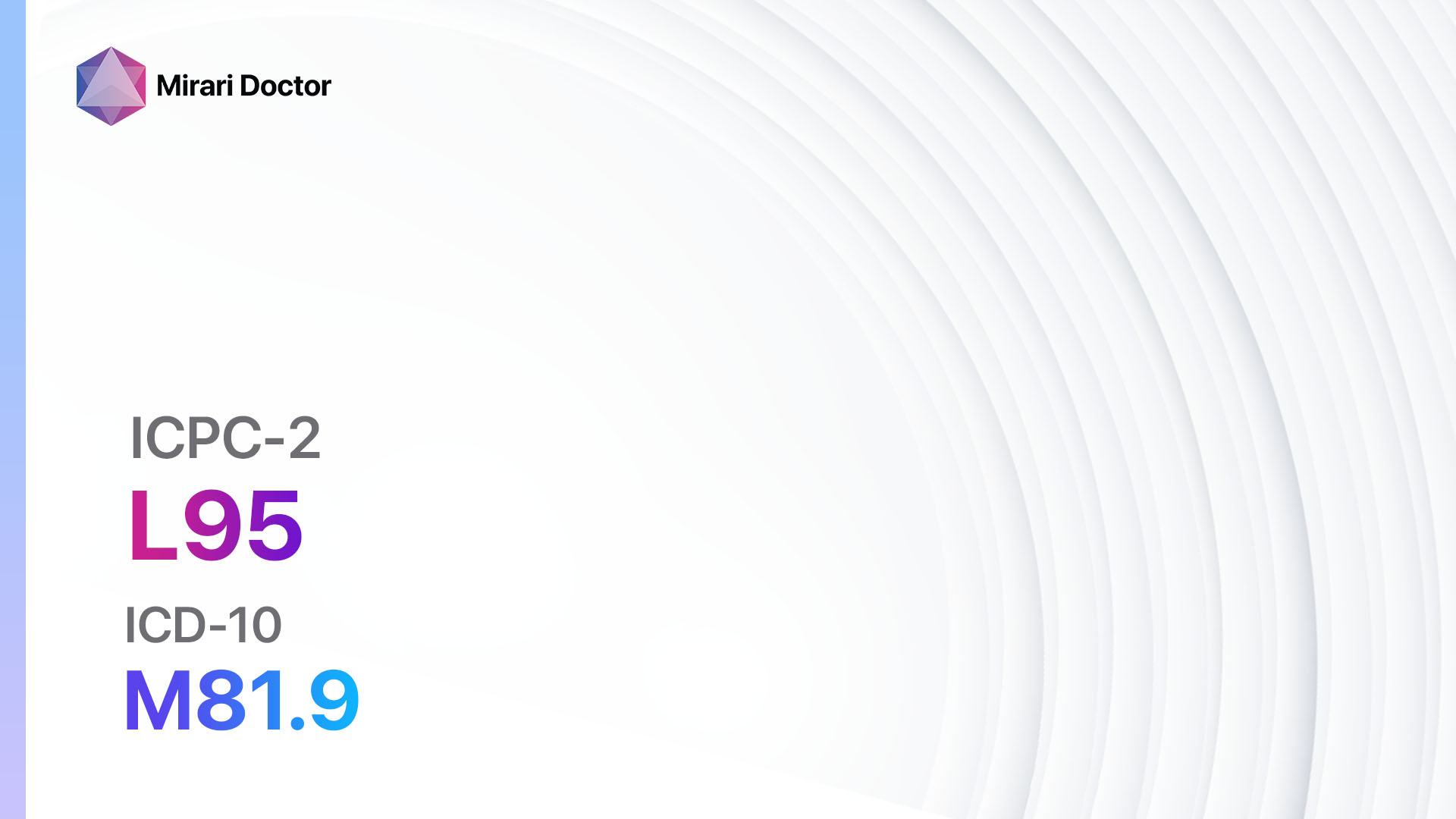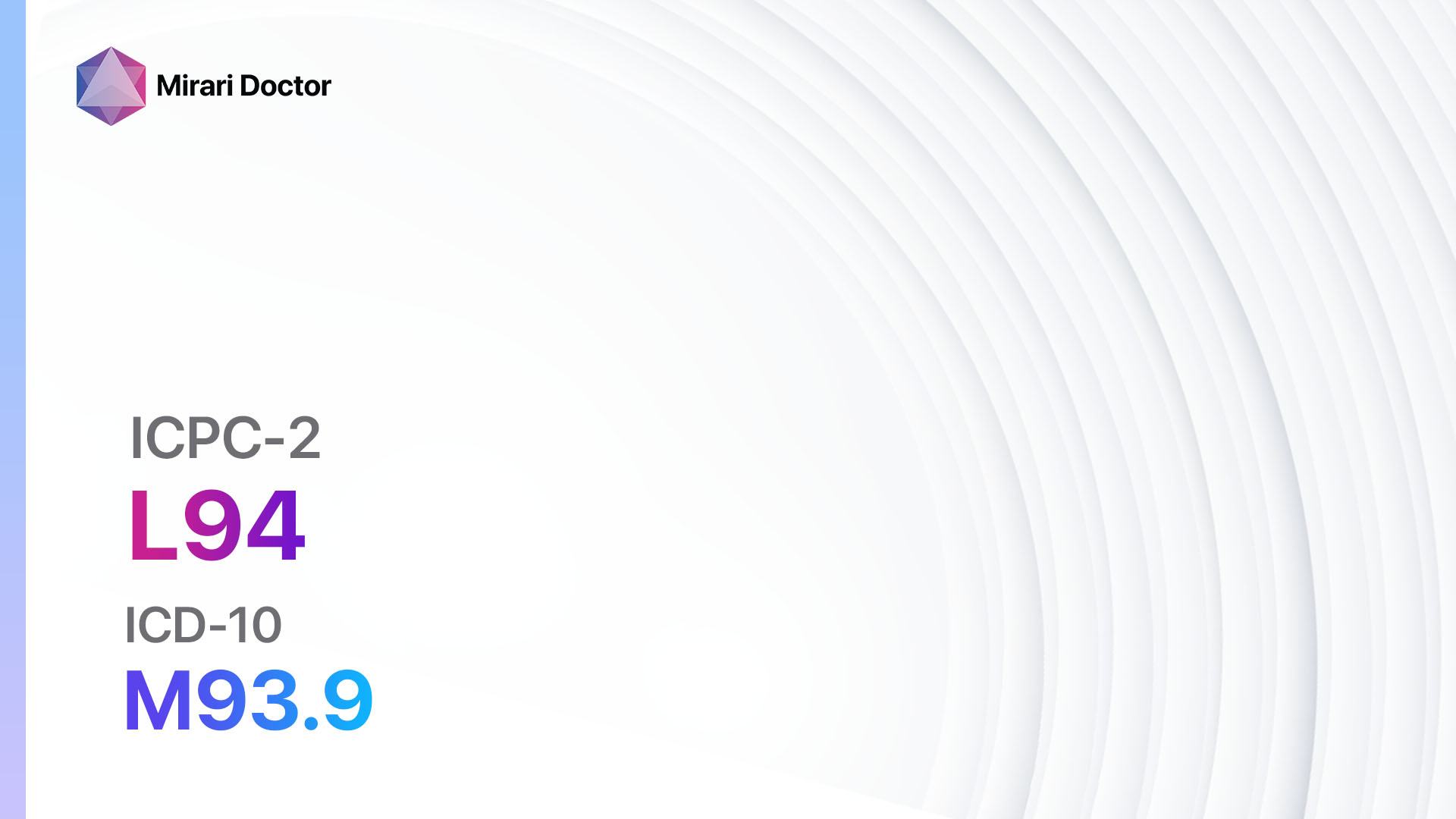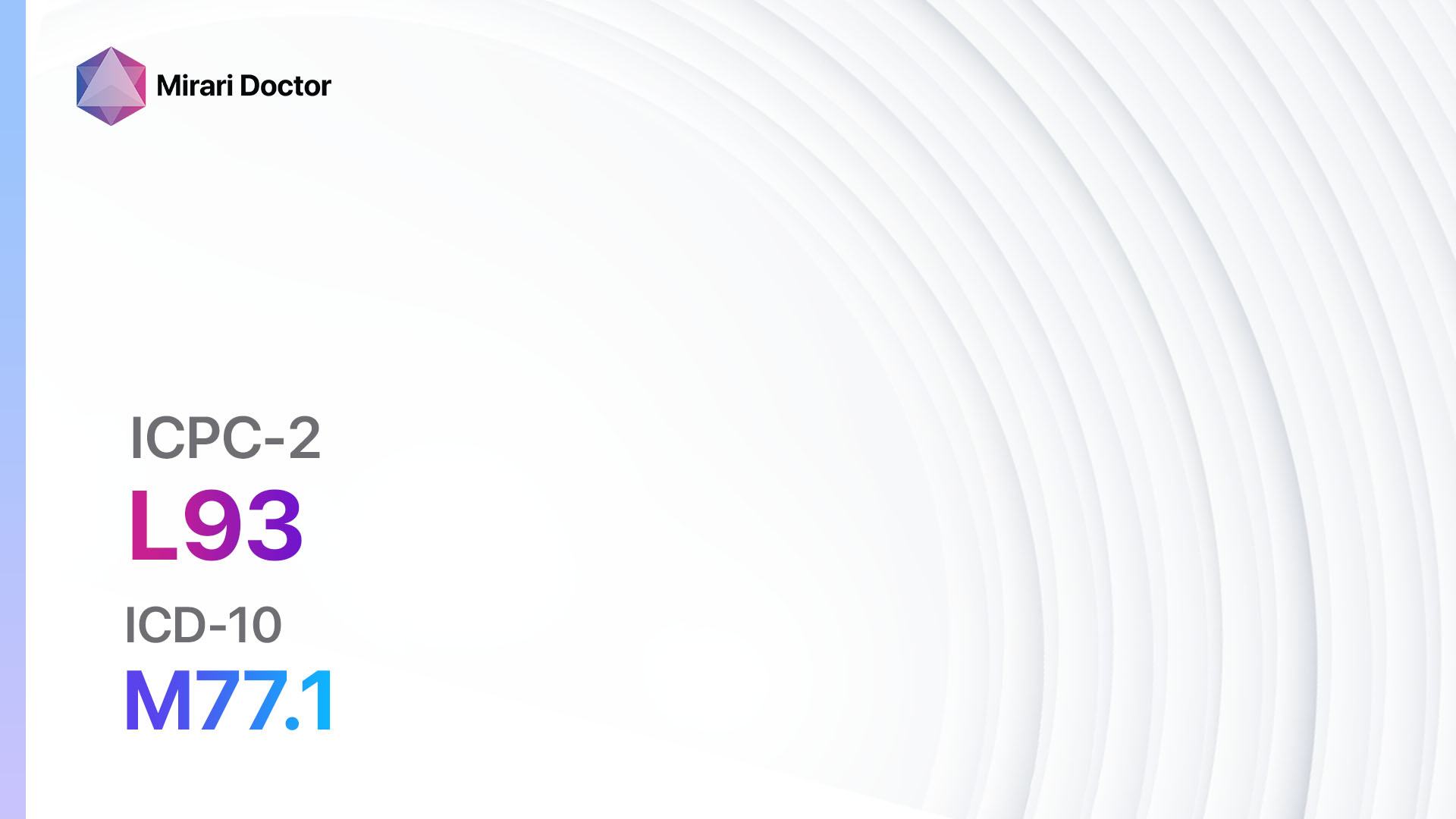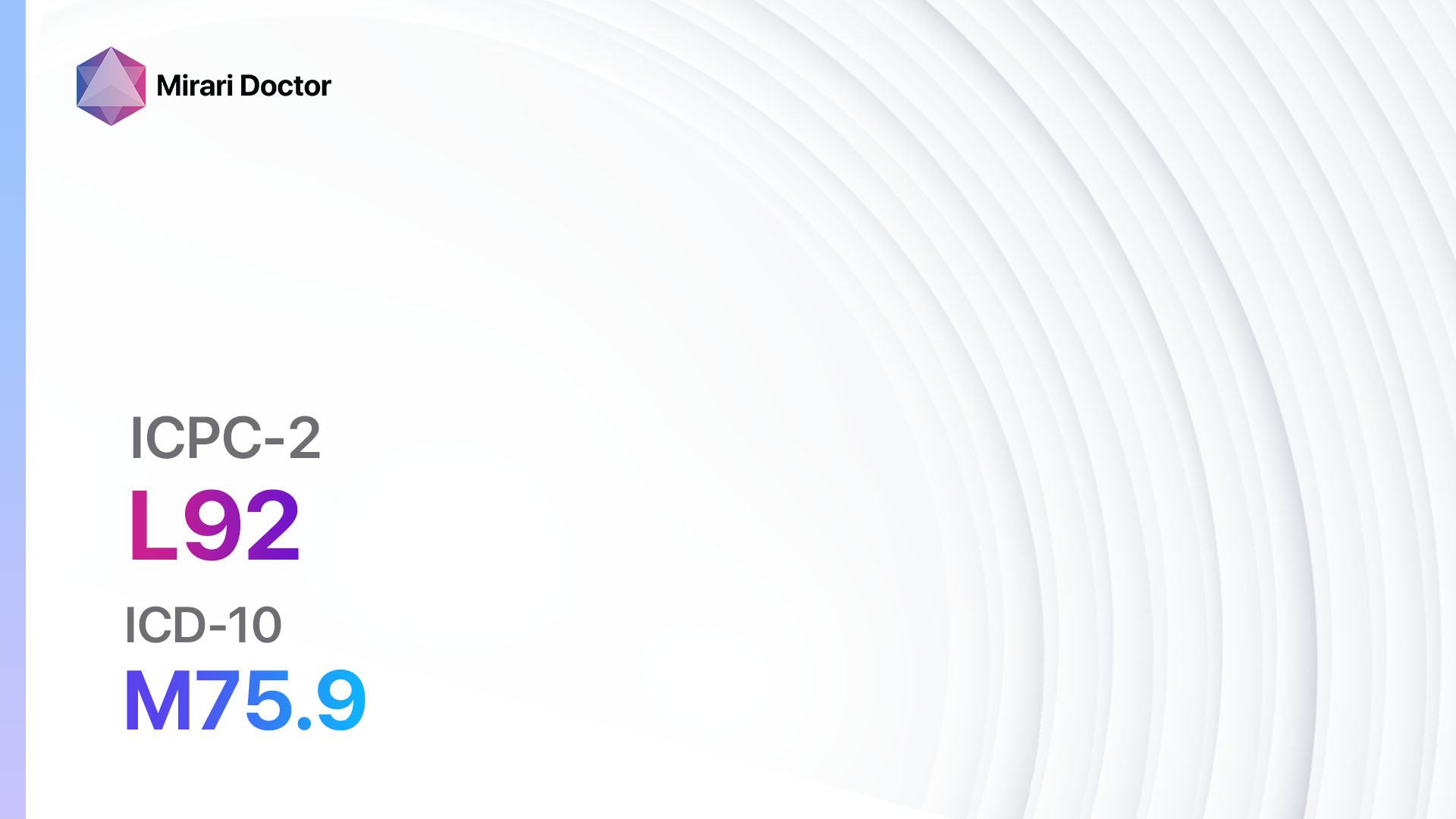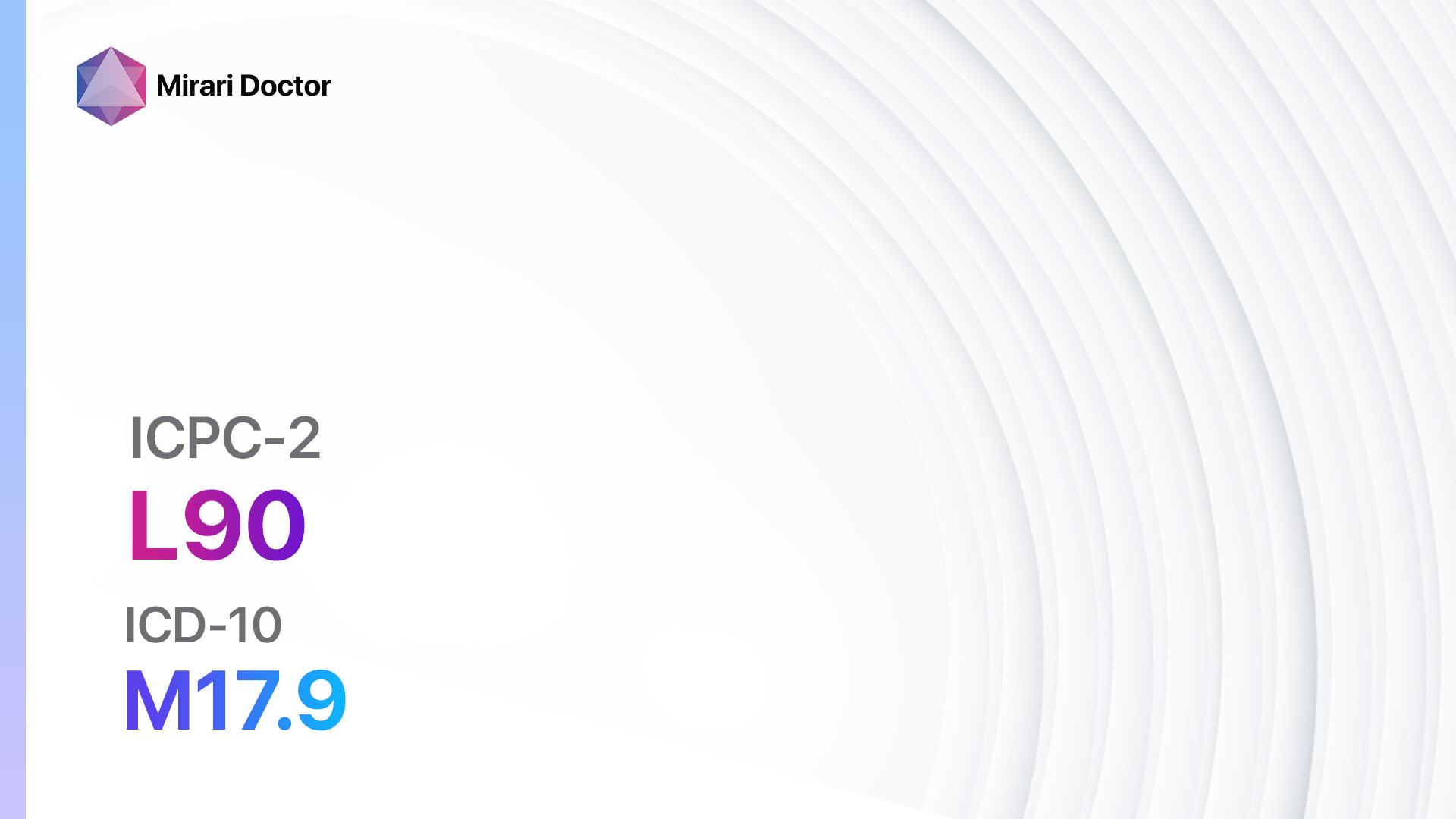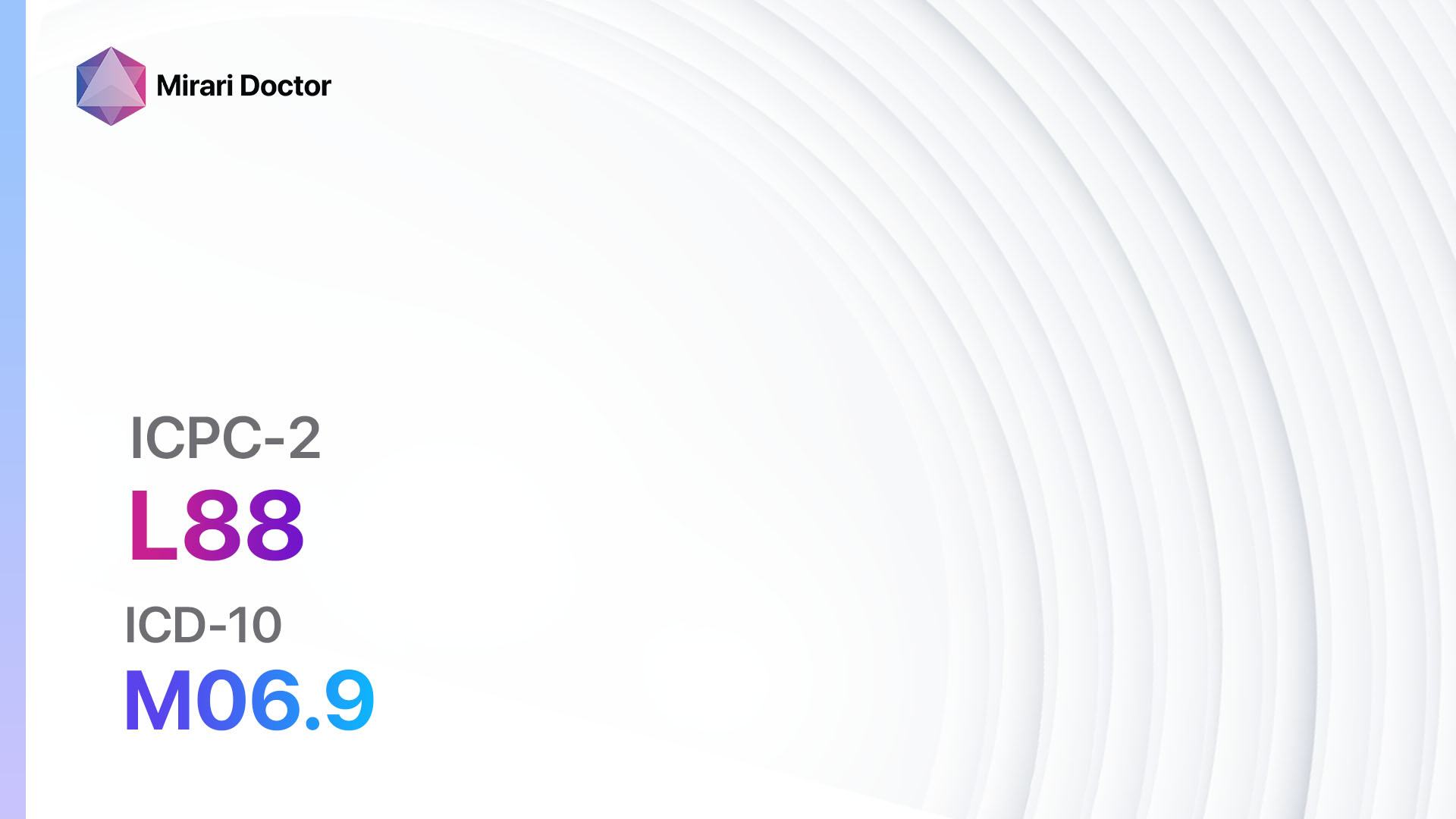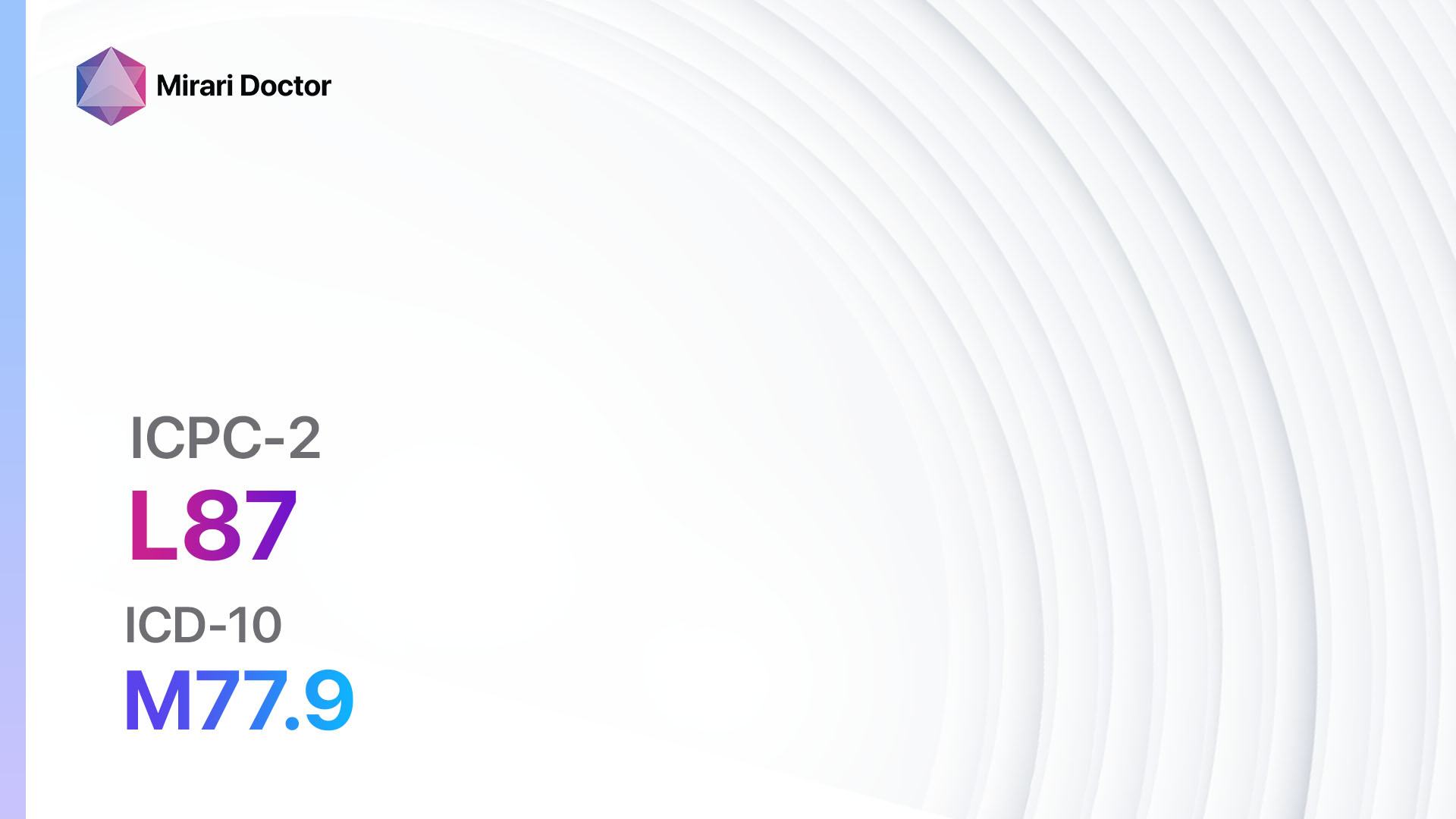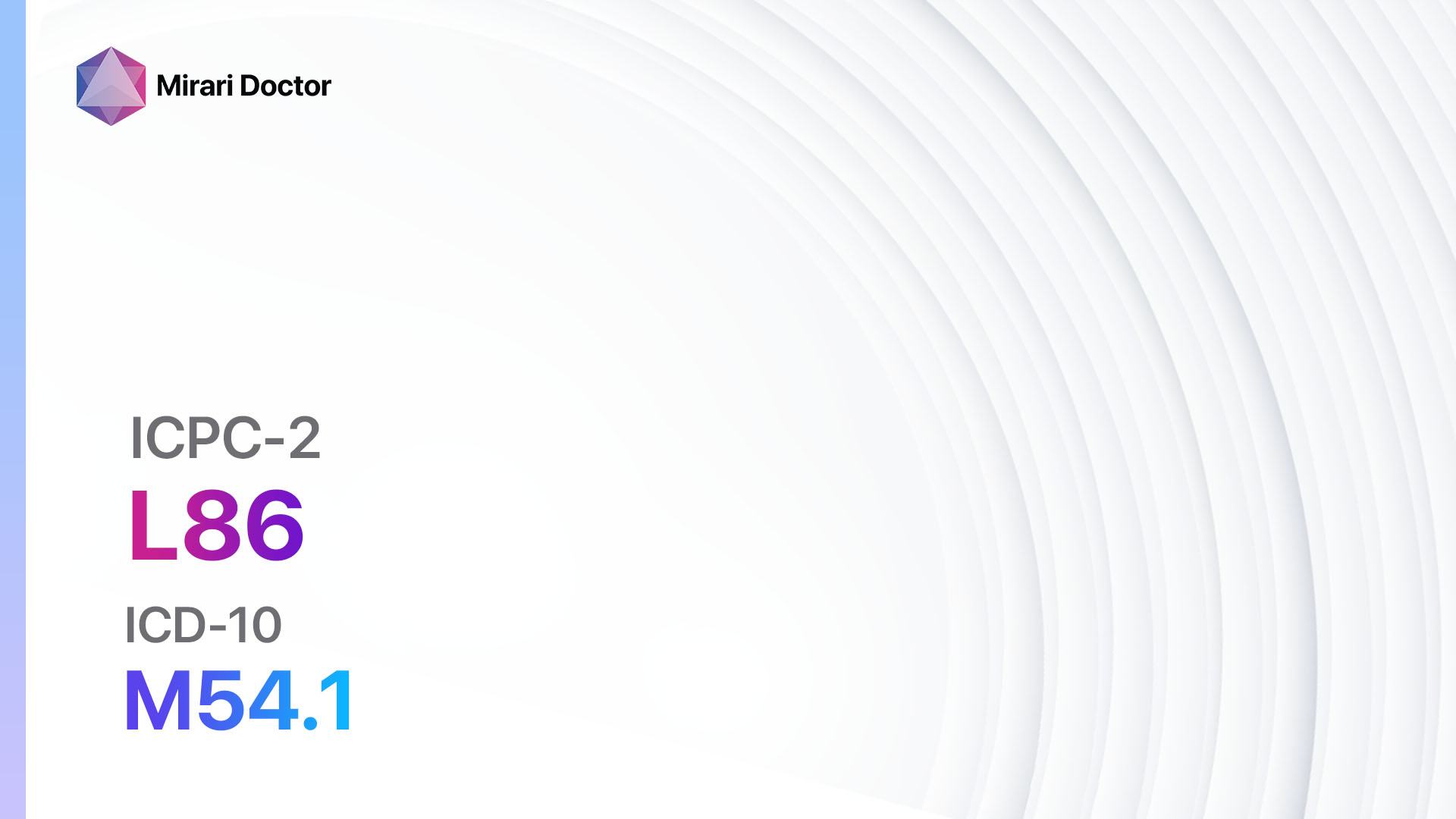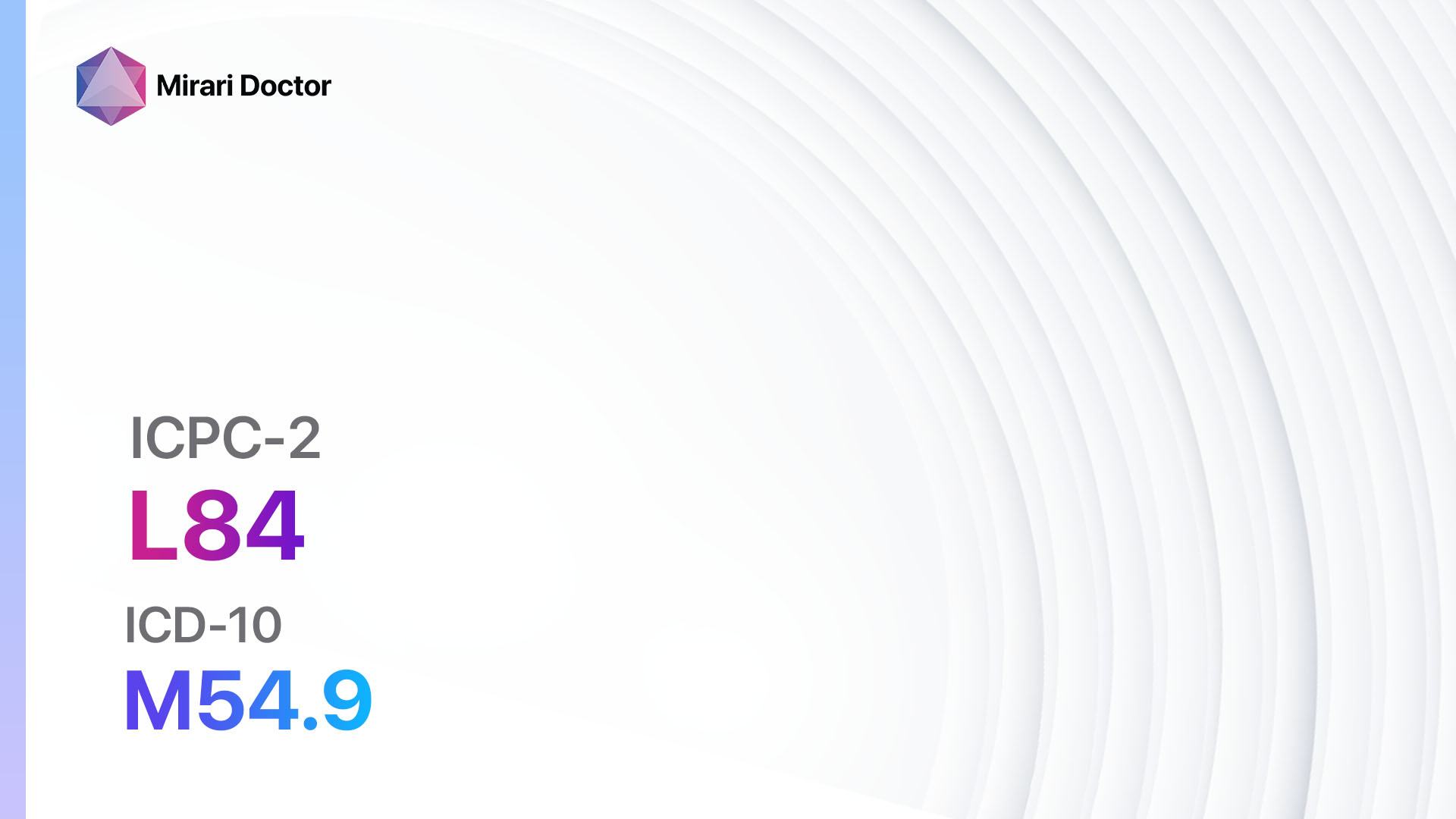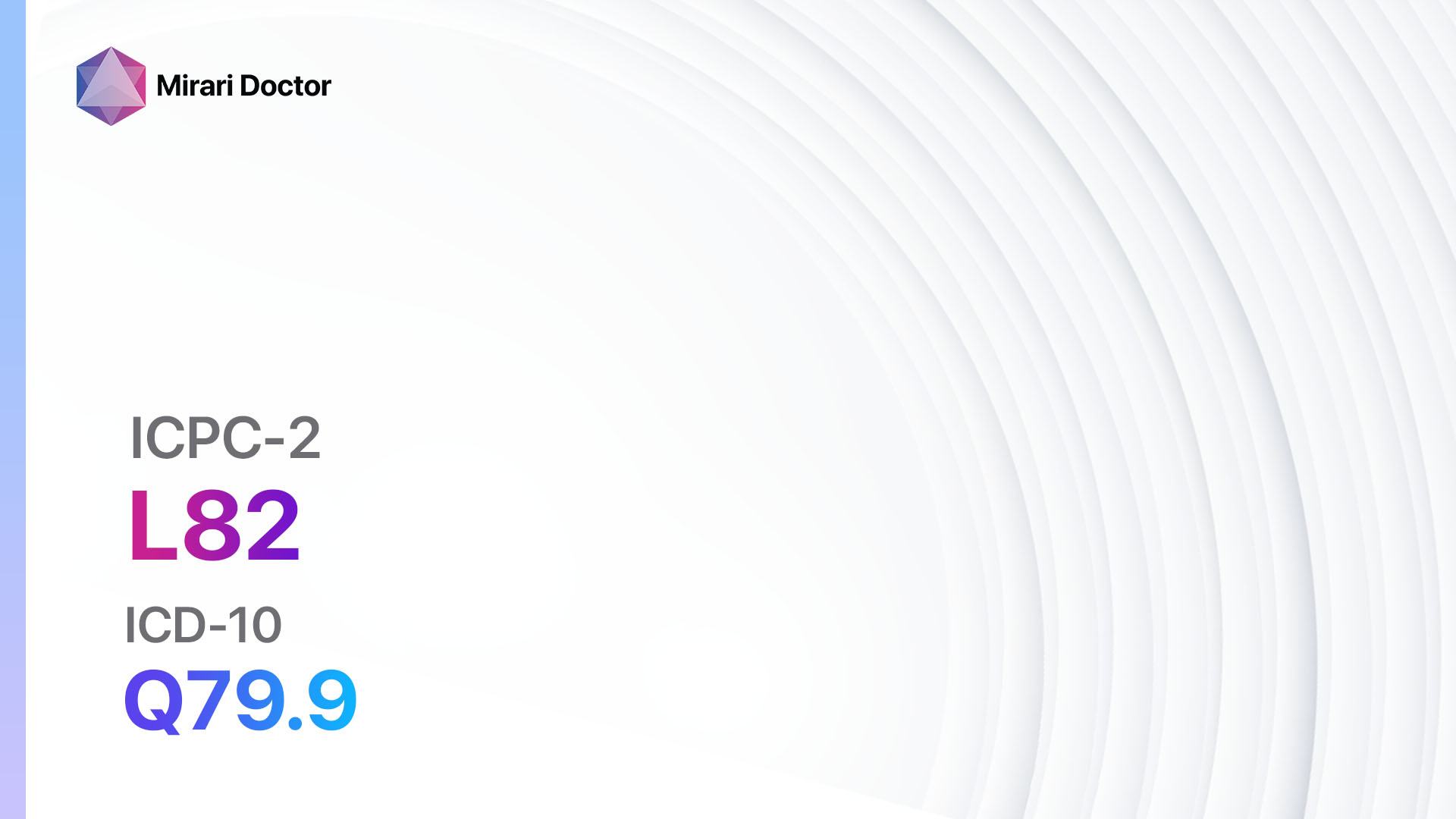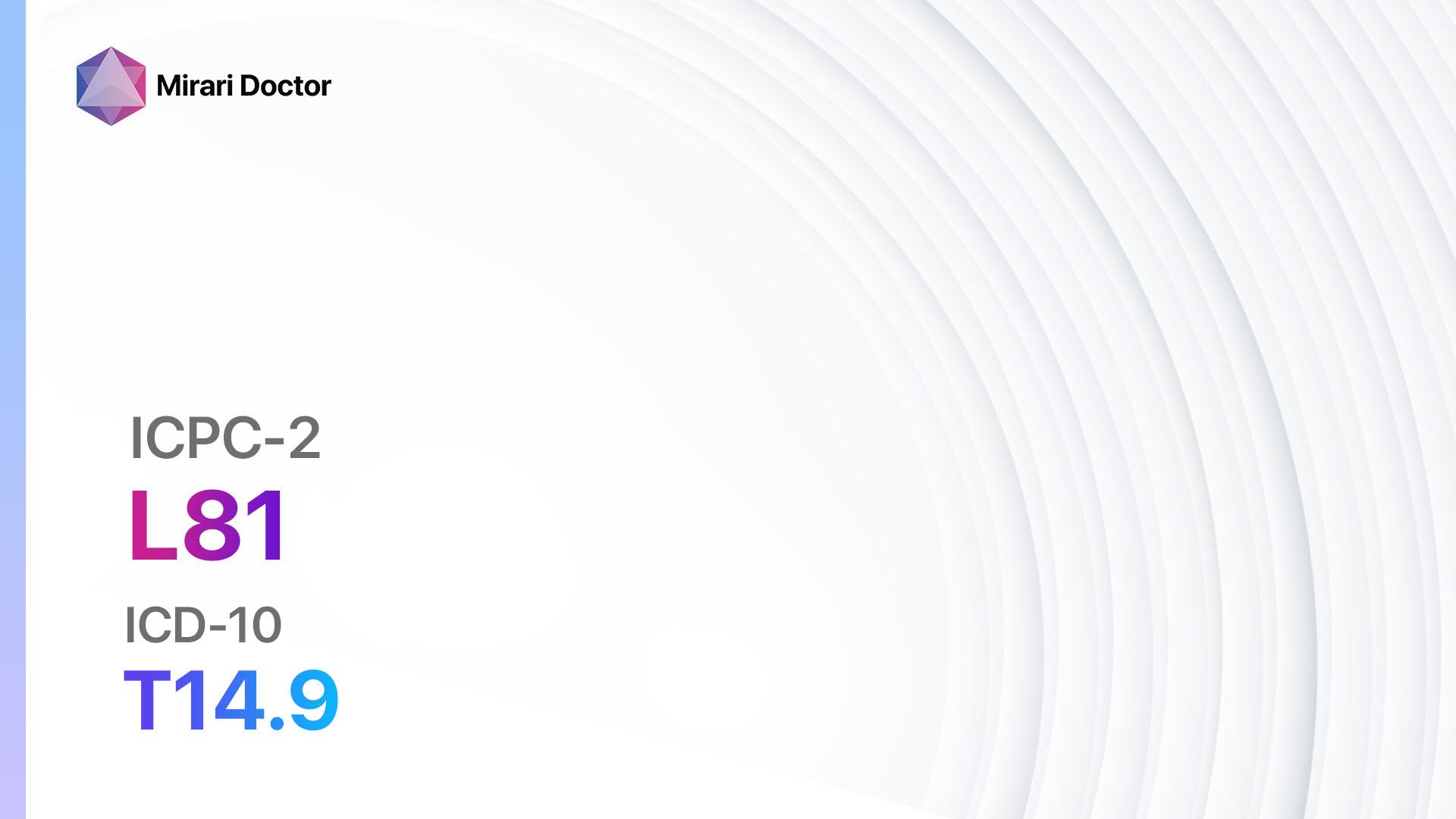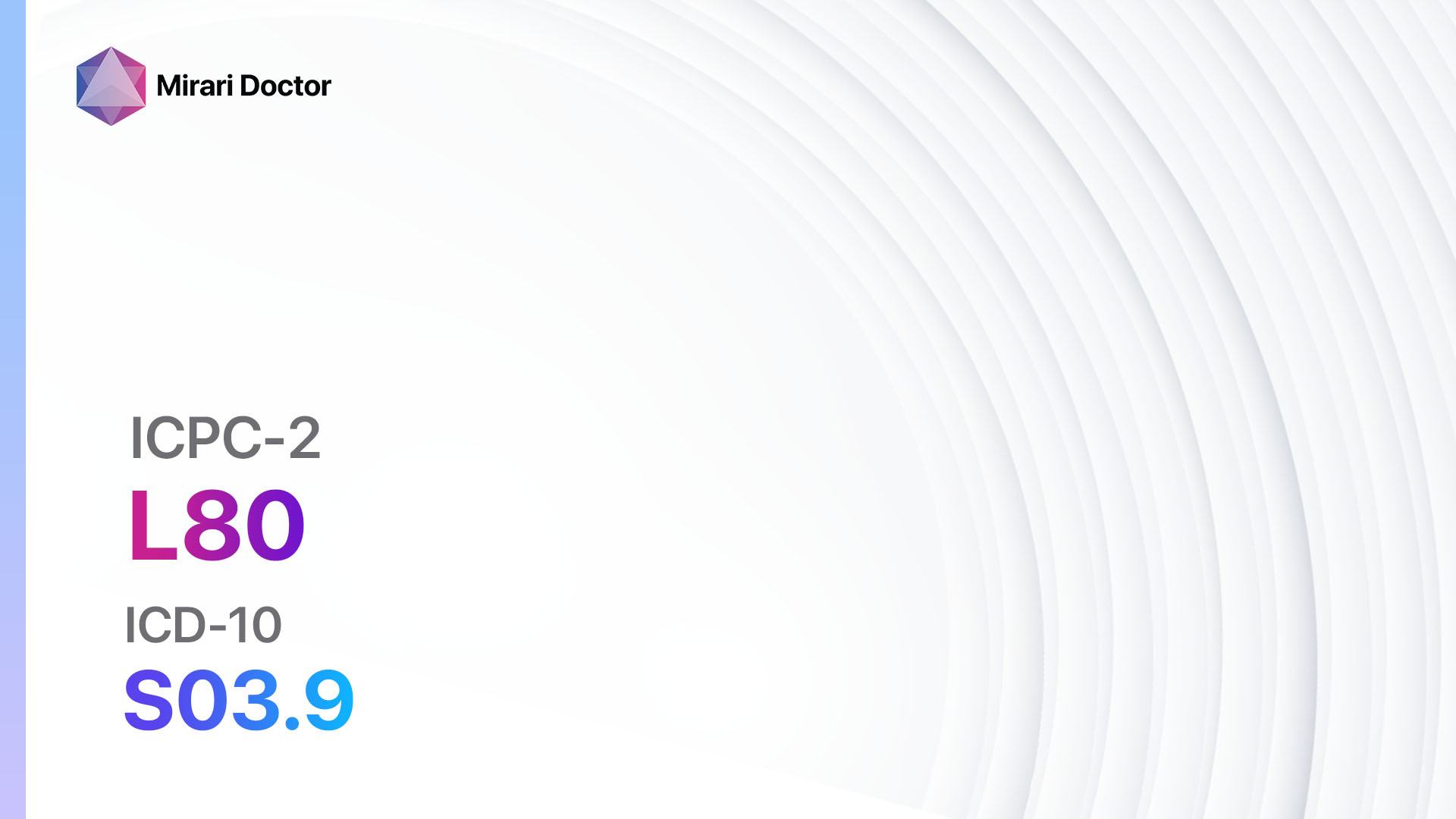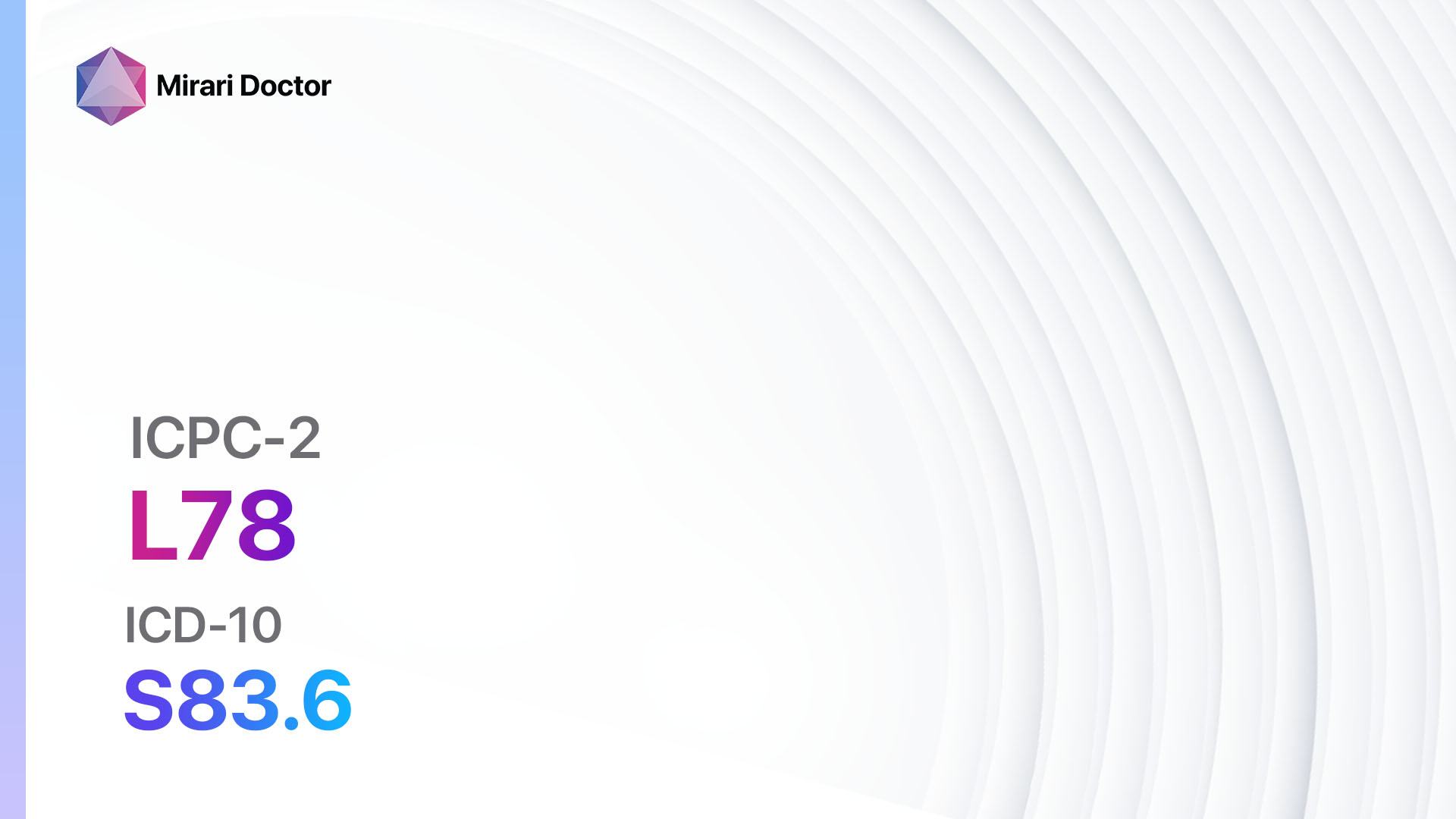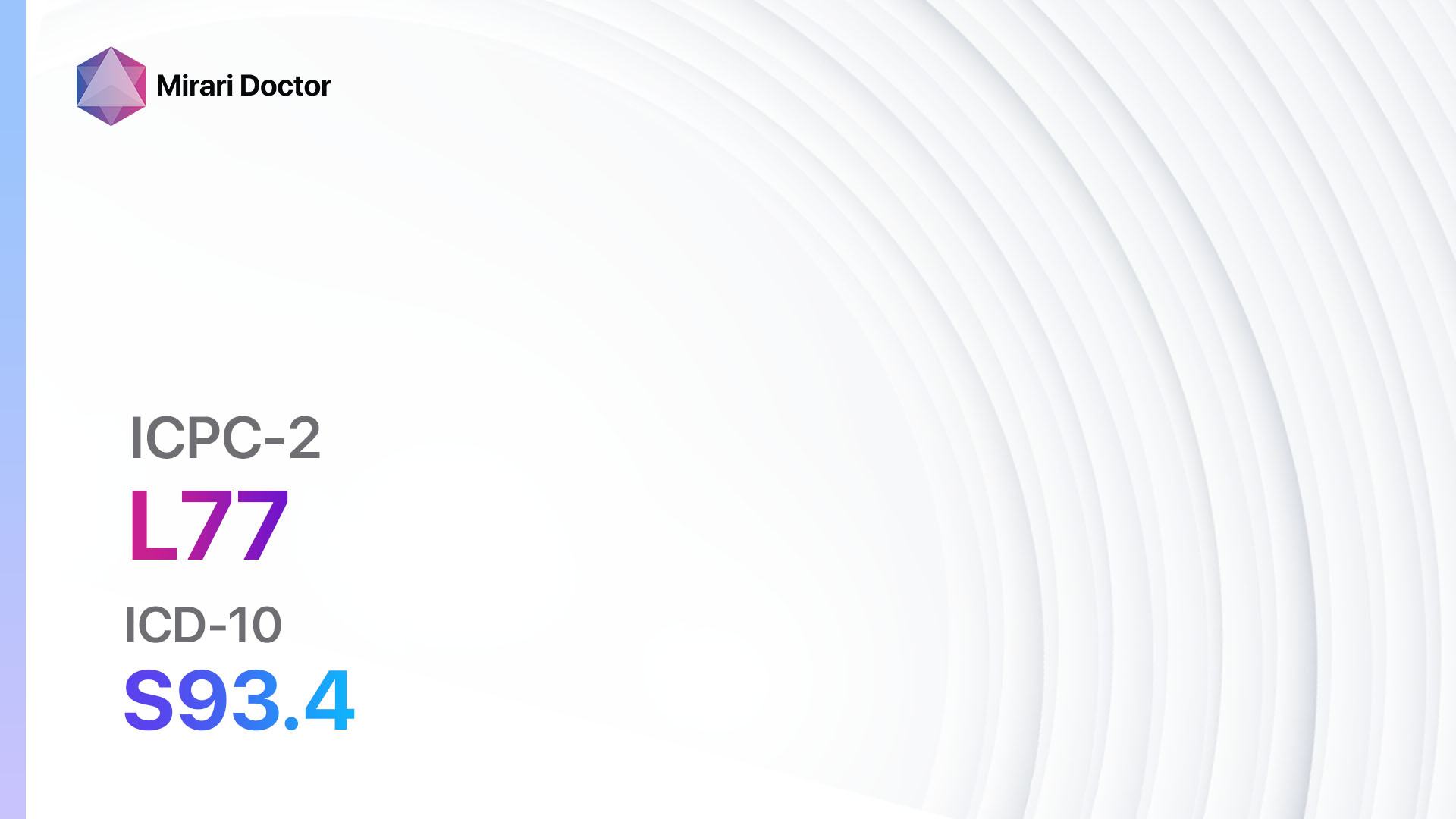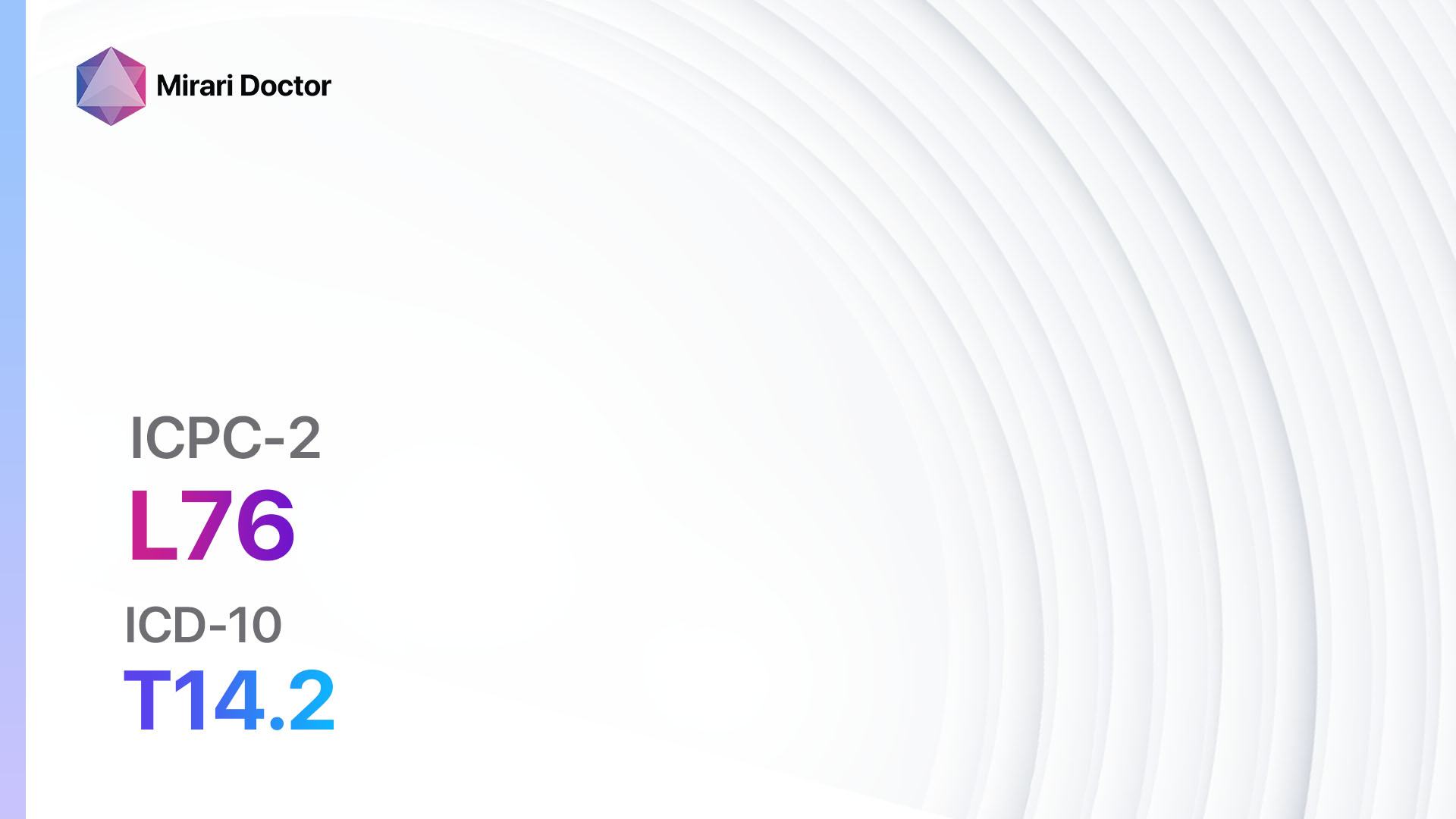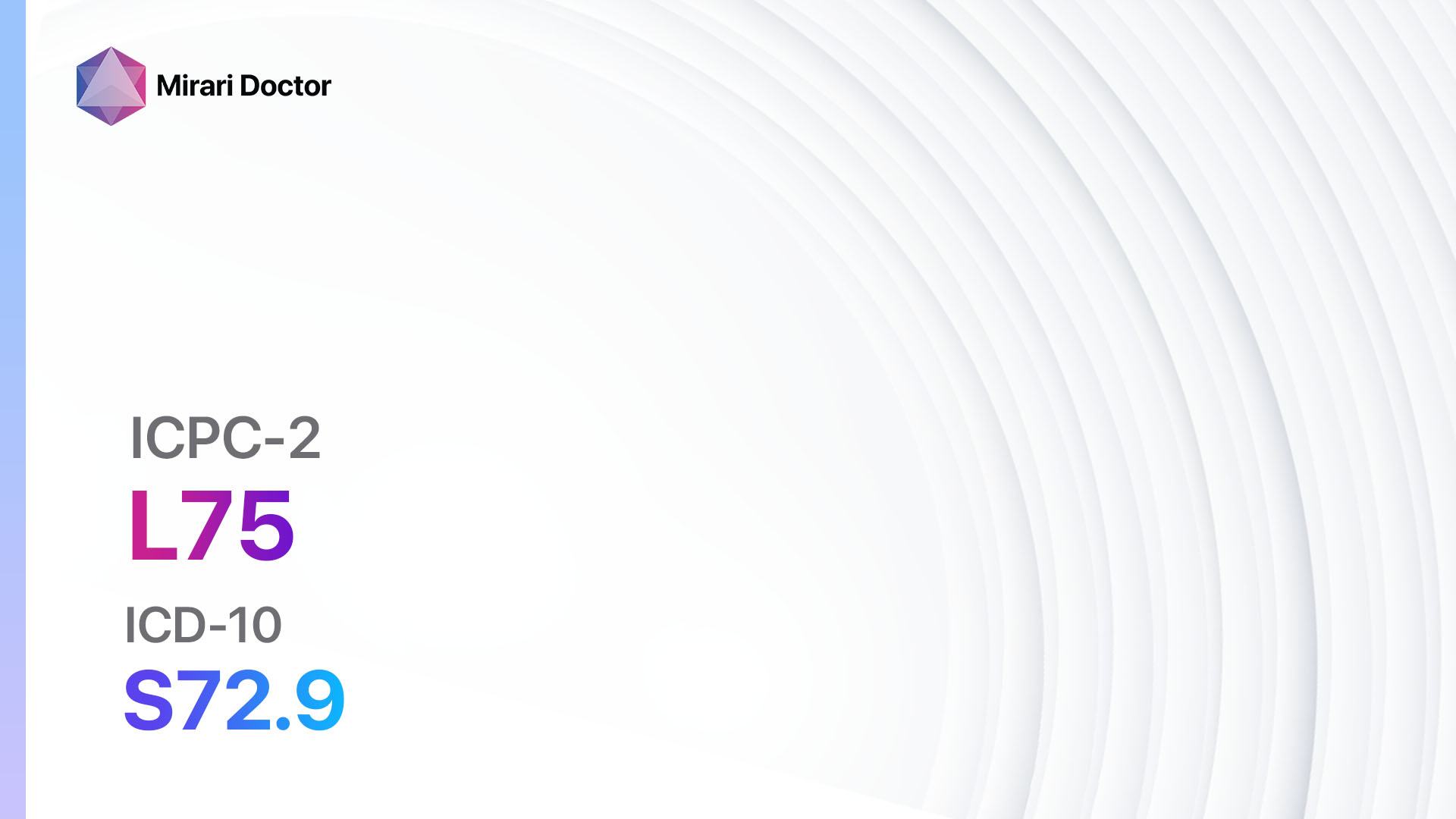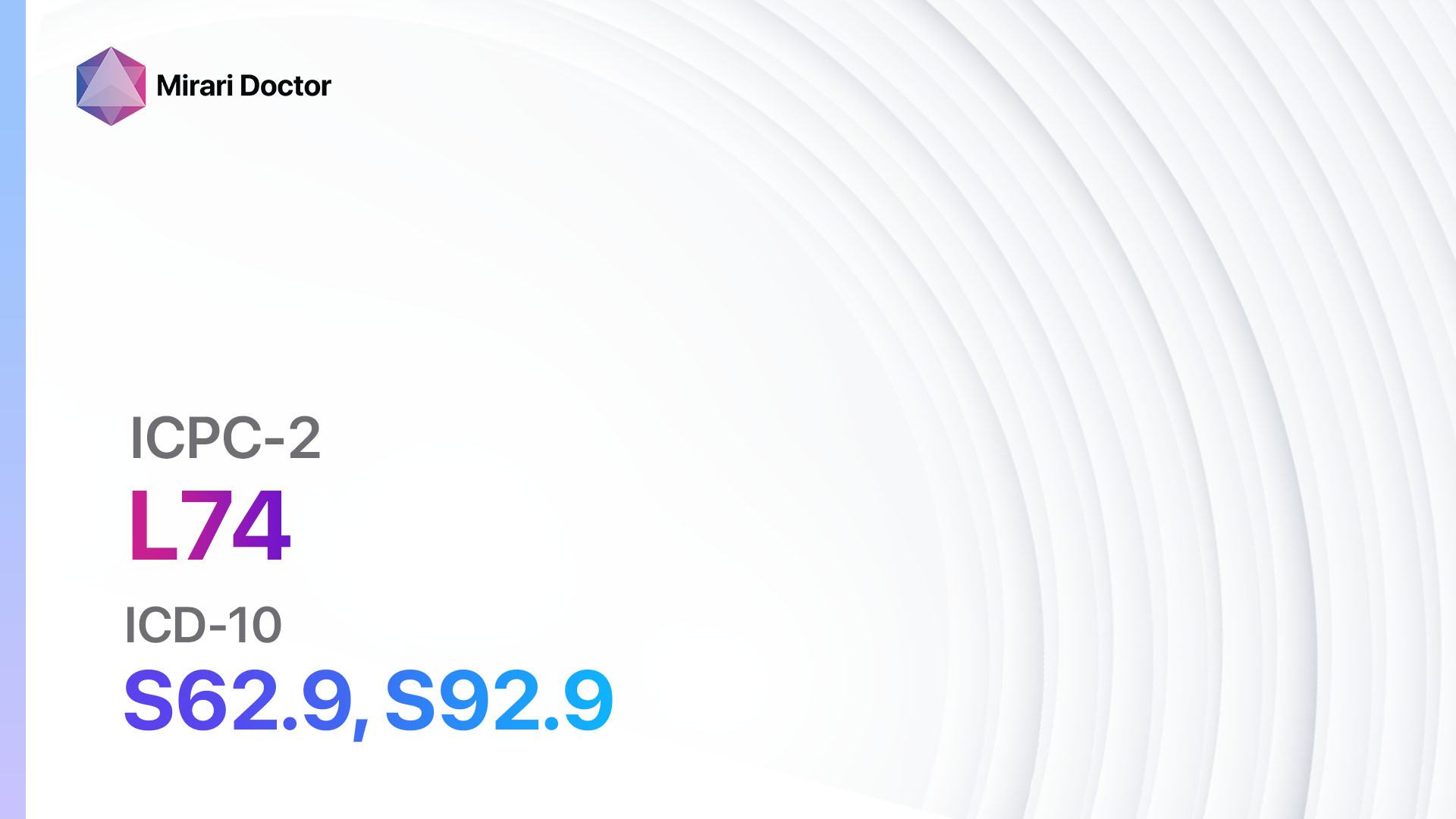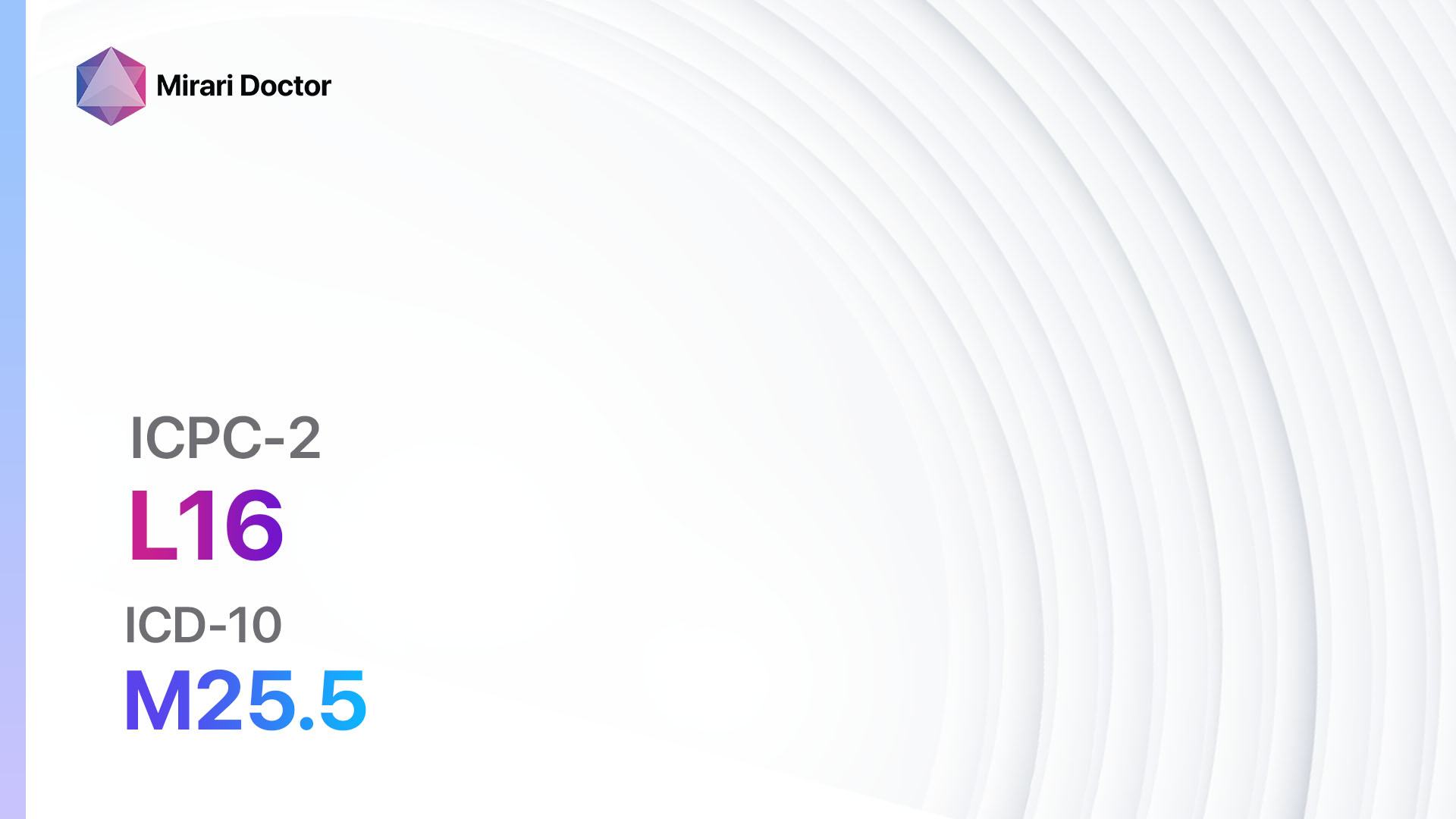
Introduction
Ankle symptoms or complaints refer to any discomfort, pain, or abnormality experienced in the ankle joint. The ankle joint is a complex structure that connects the lower leg bones (tibia and fibula) to the foot bones. Ankle symptoms can be caused by various factors, including injuries, overuse, arthritis, and other medical conditions.[1] This guide aims to provide a comprehensive overview of ankle symptoms, their causes, diagnostic steps, possible interventions, and patient education.
Codes
Symptoms
- Pain in the ankle joint
- Swelling or inflammation
- Stiffness or limited range of motion
- Instability or weakness
- Redness or warmth in the ankle area[4]
Causes
- Ankle sprains or strains
- Fractures or broken bones
- Tendinitis or inflammation of the tendons
- Arthritis, including osteoarthritis and rheumatoid arthritis
- Gout or accumulation of uric acid crystals in the joint
- Bursitis or inflammation of the fluid-filled sacs (bursae) around the joint
- Nerve compression or entrapment, such as tarsal tunnel syndrome
- Infections, such as cellulitis or septic arthritis
- Other medical conditions, including diabetes, peripheral artery disease, and autoimmune diseases[5]
Diagnostic Steps
Medical History
- Gather information about the onset, duration, and progression of ankle symptoms
- Identify any previous injuries or trauma to the ankle
- Assess the presence of any underlying medical conditions or risk factors
- Inquire about the patient’s occupation, physical activities, and footwear choices[6]
Physical Examination
- Inspect the ankle for any visible signs of swelling, redness, or deformity
- Palpate the ankle joint to assess for tenderness or pain
- Evaluate the range of motion and stability of the ankle
- Perform specific tests, such as the anterior drawer test or Thompson test, to assess ligament integrity
- Assess neurovascular status, including sensation and pulses in the foot[7]
Laboratory Tests
- Complete blood count (CBC) to assess for signs of infection or inflammation
- Erythrocyte sedimentation rate (ESR) or C-reactive protein (CRP) to evaluate the presence of systemic inflammation
- Uric acid levels to rule out gout as a cause of ankle symptoms
- Blood glucose levels to screen for diabetes
- Joint fluid analysis (arthrocentesis) in cases of suspected infection or crystal-induced arthritis[8]
Diagnostic Imaging
- X-rays of the ankle to assess for fractures, dislocations, or degenerative changes
- Magnetic resonance imaging (MRI) to evaluate soft tissue structures, such as ligaments, tendons, and cartilage
- Ultrasound to assess for tendon or ligament injuries, as well as joint effusion
- Computed tomography (CT) scan to provide detailed images of bony structures, especially in complex fractures or cases of suspected bone tumors[9]
Other Tests
- Bone scan or positron emission tomography (PET) scan in cases of suspected bone tumors or infections
- Nerve conduction studies or electromyography (EMG) to evaluate nerve function and rule out nerve entrapment syndromes
- Doppler ultrasound or ankle-brachial index (ABI) to assess blood flow and screen for peripheral artery disease[10]
Follow-up and Patient Education
- Schedule follow-up appointments to monitor the progress of treatment and adjust interventions if necessary
- Educate the patient about the importance of rest, ice, compression, and elevation (RICE) for acute ankle injuries
- Provide instructions on proper footwear, including the use of supportive shoes or orthotics
- Discuss the benefits of physical therapy exercises to improve ankle strength, flexibility, and balance
- Emphasize the importance of weight management and regular exercise to reduce the risk of ankle symptoms associated with obesity or sedentary lifestyle
Possible Interventions
Traditional Interventions
Medications:
Top 5 drugs for ankle symptoms:
- Nonsteroidal anti-inflammatory drugs (NSAIDs) (e.g., Ibuprofen, Naproxen):
- Cost: Generic versions can be $3-$20/month.
- Contraindications: Active gastrointestinal bleeding, history of peptic ulcers, severe renal impairment.
- Side effects: Upset stomach, heartburn, increased risk of bleeding.
- Severe side effects: Gastrointestinal bleeding, kidney damage, allergic reactions.
- Drug interactions: Anticoagulants, corticosteroids, selective serotonin reuptake inhibitors (SSRIs).
- Warning: Prolonged use may increase the risk of cardiovascular events.
- Acetaminophen:
- Cost: Generic versions can be $3-$10/month.
- Contraindications: Severe liver disease, alcoholism.
- Side effects: Rare at therapeutic doses, but high doses can cause liver damage.
- Severe side effects: Acute liver failure (rare).
- Drug interactions: Warfarin, alcohol.
- Warning: Avoid exceeding the recommended daily dose to prevent liver damage.
- Corticosteroids (e.g., Prednisone, Methylprednisolone):
- Cost: Generic versions can be $4-$30/month.
- Contraindications: Active infections, uncontrolled diabetes, systemic fungal infections.
- Side effects: Increased appetite, weight gain, mood changes.
- Severe side effects: Adrenal suppression, osteoporosis, increased susceptibility to infections.
- Drug interactions: Nonsteroidal anti-inflammatory drugs (NSAIDs), anticoagulants.
- Warning: Prolonged use may require tapering to avoid adrenal insufficiency.
- Muscle relaxants (e.g., Cyclobenzaprine, Methocarbamol):
- Cost: Generic versions can be $4-$30/month.
- Contraindications: Glaucoma, urinary retention, severe liver disease.
- Side effects: Drowsiness, dizziness, dry mouth.
- Severe side effects: Serotonin syndrome (rare), allergic reactions.
- Drug interactions: Sedatives, monoamine oxidase inhibitors (MAOIs).
- Warning: Avoid driving or operating heavy machinery due to sedative effects.
- Opioids (e.g., Oxycodone, Hydrocodone):
- Cost: Generic versions can be $10-$100/month.
- Contraindications: Respiratory depression, acute asthma, paralytic ileus.
- Side effects: Constipation, drowsiness, nausea.
- Severe side effects: Respiratory depression, addiction, overdose.
- Drug interactions: Benzodiazepines, alcohol, other central nervous system depressants.
- Warning: Use with caution due to the risk of addiction and overdose.
Alternative Drugs:
- Topical analgesics (e.g., Lidocaine patches, Capsaicin cream): Provide localized pain relief without systemic side effects. Cost: $10-$50 per application.
- Antidepressants (e.g., Amitriptyline, Duloxetine): May help with chronic pain management. Cost: Generic versions can be $4-$30/month.
- Anticonvulsants (e.g., Gabapentin, Pregabalin): Can be effective for neuropathic pain. Cost: Generic versions can be $4-$30/month.
- Steroid injections (e.g., Triamcinolone, Methylprednisolone): Provide targeted anti-inflammatory effects. Cost: $50-$200 per injection.
- Hyaluronic acid injections (e.g., Synvisc, Orthovisc): Used for osteoarthritis-related ankle pain. Cost: $500-$1000 per injection.
Surgical Procedures:
- Arthroscopy: Minimally invasive procedure to diagnose and treat various ankle conditions. Cost: $5,000 to $15,000.
- Ankle fusion: Surgical fusion of the ankle joint to relieve pain and improve stability. Cost: $15,000 to $30,000.
- Ankle replacement: Surgical replacement of the damaged ankle joint with an artificial joint. Cost: $20,000 to $40,000.
Alternative Interventions
- Physical therapy: Exercises and manual techniques to improve ankle strength, flexibility, and balance. Cost: $50-$150 per session.
- Chiropractic care: Manipulative therapies to restore joint function and alleviate pain. Cost: $50-$200 per session.
- Acupuncture: May help reduce pain and improve blood flow. Cost: $60-$120 per session.
- Massage therapy: Manual manipulation of soft tissues to relieve muscle tension and promote relaxation. Cost: $50-$100 per session.
- Herbal supplements: Some herbs, such as turmeric and ginger, have anti-inflammatory properties. Cost: Varies depending on the specific supplement.
Lifestyle Interventions
- Rest and elevation: Resting the affected ankle and elevating it above heart level can help reduce swelling and promote healing. Cost: Free.
- Ice therapy: Applying ice packs or cold compresses to the ankle can help reduce pain and inflammation. Cost: $5-$20 for ice packs.
- Compression: Using compression bandages or ankle braces can provide support and reduce swelling. Cost: $10-$50 for compression bandages or braces.
- Weight management: Maintaining a healthy weight can reduce stress on the ankle joint. Cost: Varies depending on the chosen weight management program.
- Proper footwear: Wearing supportive shoes or orthotics can provide stability and reduce strain on the ankle. Cost: $50-$200 for supportive shoes or orthotics.
It is important to note that the cost ranges provided are approximate and may vary depending on the location and availability of the interventions. It is recommended to consult with a healthcare professional for personalized treatment options and cost estimates.
Mirari Cold Plasma Alternative Intervention
Understanding Mirari Cold Plasma
- Safe and Non-Invasive Treatment: Mirari Cold Plasma is a safe and non-invasive treatment option for various skin conditions. It does not require incisions, minimizing the risk of scarring, bleeding, or tissue damage.
- Efficient Extraction of Foreign Bodies: Mirari Cold Plasma facilitates the removal of foreign bodies from the skin by degrading and dissociating organic matter, allowing easier access and extraction.
- Pain Reduction and Comfort: Mirari Cold Plasma has a local analgesic effect, providing pain relief during the treatment, making it more comfortable for the patient.
- Reduced Risk of Infection: Mirari Cold Plasma has antimicrobial properties, effectively killing bacteria and reducing the risk of infection.
- Accelerated Healing and Minimal Scarring: Mirari Cold Plasma stimulates wound healing and tissue regeneration, reducing healing time and minimizing the formation of scars.
Mirari Cold Plasma Prescription
Video instructions for using Mirari Cold Plasma Device – L16 Ankle symptom/complaint (ICD-10:M25.5)
| Mild | Moderate | Severe |
| Mode setting: 2 (Wound Healing) Location: 0 (Localized) Morning: 15 minutes, Evening: 15 minutes |
Mode setting: 2 (Wound Healing) Location: 0 (Localized) Morning: 30 minutes, Lunch: 30 minutes, Evening: 30 minutes |
Mode setting: 2 (Wound Healing) Location: 0 (Localized) Morning: 30 minutes, Lunch: 30 minutes, Evening: 30 minutes |
| Mode setting: 9 (Arthritis) Location: 0 (Localized) Morning: 15 minutes, Evening: 15 minutes |
Mode setting: 9 (Arthritis) Location: 0 (Localized) Morning: 30 minutes, Lunch: 30 minutes, Evening: 30 minutes |
Mode setting: 9 (Arthritis) Location: 0 (Localized) Morning: 30 minutes, Lunch: 30 minutes, Evening: 30 minutes |
| Mode setting: 7 (Immunotherapy) Location: 1 (Sacrum) Morning: 15 minutes, Evening: 15 minutes |
Mode setting: 7 (Immunotherapy) Location: 1 (Sacrum) Morning: 30 minutes, Lunch: 30 minutes, Evening: 30 minutes |
Mode setting: 7 (Immunotherapy) Location: 1 (Sacrum) Morning: 30 minutes, Lunch: 30 minutes, Evening: 30 minutes |
| Total Morning: 45 minutes approx. $7.50 USD, Evening: 45 minutes approx. $7.50 USD |
Total Morning: 90 minutes approx. $15 USD, Lunch: 90 minutes approx. $15 USD, Evening: 90 minutes approx. $15 USD, |
Total Morning: 90 minutes approx. $15 USD, Lunch: 90 minutes approx. $15 USD, Evening: 90 minutes approx. $15 USD, |
| Usual treatment for 7-60 days approx. $105 USD – $900 USD | Usual treatment for 6-8 weeks approx. $1,890 USD – $2,520 USD |
Usual treatment for 3-6 months approx. $4,050 USD – $8,100 USD
|
 |
|
Use the Mirari Cold Plasma device to treat Ankle symptom/complaint effectively.
WARNING: MIRARI COLD PLASMA IS DESIGNED FOR THE HUMAN BODY WITHOUT ANY ARTIFICIAL OR THIRD PARTY PRODUCTS. USE OF OTHER PRODUCTS IN COMBINATION WITH MIRARI COLD PLASMA MAY CAUSE UNPREDICTABLE EFFECTS, HARM OR INJURY. PLEASE CONSULT A MEDICAL PROFESSIONAL BEFORE COMBINING ANY OTHER PRODUCTS WITH USE OF MIRARI.
Step 1: Cleanse the Skin
- Start by cleaning the affected area of the skin with a gentle cleanser or mild soap and water. Gently pat the area dry with a clean towel.
Step 2: Prepare the Mirari Cold Plasma device
- Ensure that the Mirari Cold Plasma device is fully charged or has fresh batteries as per the manufacturer’s instructions. Make sure the device is clean and in good working condition.
- Switch on the Mirari device using the power button or by following the specific instructions provided with the device.
- Some Mirari devices may have adjustable settings for intensity or treatment duration. Follow the manufacturer’s instructions to select the appropriate settings based on your needs and the recommended guidelines.
Step 3: Apply the Device
- Place the Mirari device in direct contact with the affected area of the skin. Gently glide or hold the device over the skin surface, ensuring even coverage of the area experiencing.
- Slowly move the Mirari device in a circular motion or follow a specific pattern as indicated in the user manual. This helps ensure thorough treatment coverage.
Step 4: Monitor and Assess:
- Keep track of your progress and evaluate the effectiveness of the Mirari device in managing your Ankle symptom/complaint. If you have any concerns or notice any adverse reactions, consult with your health care professional.
Note
This guide is for informational purposes only and should not replace the advice of a medical professional. Always consult with your healthcare provider or a qualified medical professional for personal advice, diagnosis, or treatment. Do not solely rely on the information presented here for decisions about your health. Use of this information is at your own risk. The authors of this guide, nor any associated entities or platforms, are not responsible for any potential adverse effects or outcomes based on the content.
Mirari Cold Plasma System Disclaimer
- Purpose: The Mirari Cold Plasma System is a Class 2 medical device designed for use by trained healthcare professionals. It is registered for use in Thailand and Vietnam. It is not intended for use outside of these locations.
- Informational Use: The content and information provided with the device are for educational and informational purposes only. They are not a substitute for professional medical advice or care.
- Variable Outcomes: While the device is approved for specific uses, individual outcomes can differ. We do not assert or guarantee specific medical outcomes.
- Consultation: Prior to utilizing the device or making decisions based on its content, it is essential to consult with a Certified Mirari Tele-Therapist and your medical healthcare provider regarding specific protocols.
- Liability: By using this device, users are acknowledging and accepting all potential risks. Neither the manufacturer nor the distributor will be held accountable for any adverse reactions, injuries, or damages stemming from its use.
- Geographical Availability: This device has received approval for designated purposes by the Thai and Vietnam FDA. As of now, outside of Thailand and Vietnam, the Mirari Cold Plasma System is not available for purchase or use.
References
- Alazzawi, S., Sukeik, M., King, D., & Vemulapalli, K. (2017). Foot and ankle history and clinical examination: A guide to everyday practice. World journal of orthopedics, 8(1), 21–29. https://doi.org/10.5312/wjo.v8.i1.21
- ICPC-2. (n.d.). L16 – Ankle symptom/complaint. Retrieved from https://www.icpc-2.info/en/browse/chapter-l/L16/
- ICD-10 Version:2019. (n.d.). M25.5 Pain in joint. Retrieved from https://icd.who.int/browse10/2019/en#/M25.5
- Polzer, H., Kanz, K. G., Prall, W. C., Haasters, F., Ockert, B., Mutschler, W., & Grote, S. (2012). Diagnosis and treatment of acute ankle injuries: development of an evidence-based algorithm. Orthopedic reviews, 4(1), e5. https://doi.org/10.4081/or.2012.e5
- Doherty, C., Delahunt, E., Caulfield, B., Hertel, J., Ryan, J., & Bleakley, C. (2014). The incidence and prevalence of ankle sprain injury: a systematic review and meta-analysis of prospective epidemiological studies. Sports medicine (Auckland, N.Z.), 44(1), 123–140. https://doi.org/10.1007/s40279-013-0102-5
- Vuurberg, G., Hoorntje, A., Wink, L. M., van der Doelen, B., van den Bekerom, M. P., Dekker, R., van Dijk, C. N., Krips, R., Loogman, M., Ridderikhof, M. L., Smithuis, F. F., Stufkens, S., Verhagen, E., de Bie, R. A., & Kerkhoffs, G. (2018). Diagnosis, treatment and prevention of ankle sprains: update of an evidence-based clinical guideline. British journal of sports medicine, 52(15), 956. https://doi.org/10.1136/bjsports-2017-098106
- Kaminski, T. W., Hertel, J., Amendola, N., Docherty, C. L., Dolan, M. G., Hopkins, J. T., Nussbaum, E., Poppy, W., Richie, D., & National Athletic Trainers’ Association (2013). National Athletic Trainers’ Association position statement: conservative management and prevention of ankle sprains in athletes. Journal of athletic training, 48(4), 528–545. https://doi.org/10.4085/1062-6050-48.4.02
- Gribble, P. A., Bleakley, C. M., Caulfield, B. M., Docherty, C. L., Fourchet, F., Fong, D. T., Hertel, J., Hiller, C. E., Kaminski, T. W., McKeon, P. O., Refshauge, K. M., Verhagen, E. A., Vicenzino, B. T., Wikstrom, E. A., & Delahunt, E. (2016). 2016 consensus statement of the International Ankle Consortium: prevalence, impact and long-term consequences of lateral ankle sprains. British journal of sports medicine, 50(24), 1493–1495. https://doi.org/10.1136/bjsports-2016-096188
- Delahunt, E., Bleakley, C. M., Bossard, D. S., Caulfield, B. M., Docherty, C. L., Doherty, C., Fourchet, F., Fong, D. T., Hertel, J., Hiller, C. E., Kaminski, T. W., McKeon, P. O., Refshauge, K. M., Remus, A., Verhagen, E., Vicenzino, B. T., Wikstrom, E. A., & Gribble, P. A. (2018). Clinical assessment of acute lateral ankle sprain injuries (ROAST): 2019 consensus statement and recommendations of the International Ankle Consortium. British journal of sports medicine, 52(20), 1304–1310. https://doi.org/10.1136/bjsports-2017-098885
- Martin, R. L., Davenport, T. E., Paulseth, S., Wukich, D. K., Godges, J. J., & Orthopaedic Section American Physical Therapy Association (2013). Ankle stability and movement coordination impairments: ankle ligament sprains. The Journal of orthopaedic and sports physical therapy, 43(9), A1–A40. https://doi.org/10.2519/jospt.2013.0305
Related articles
Made in USA



